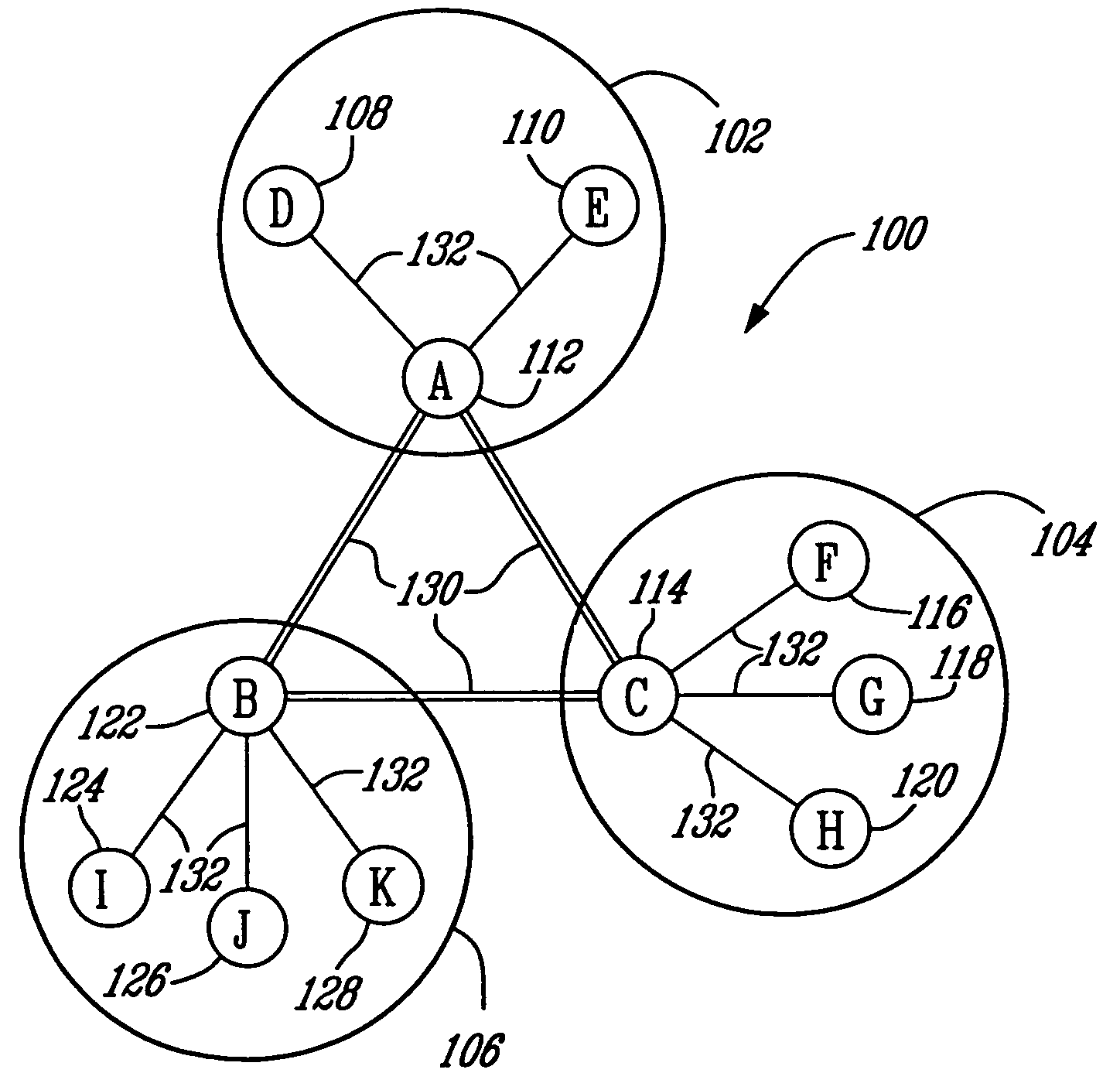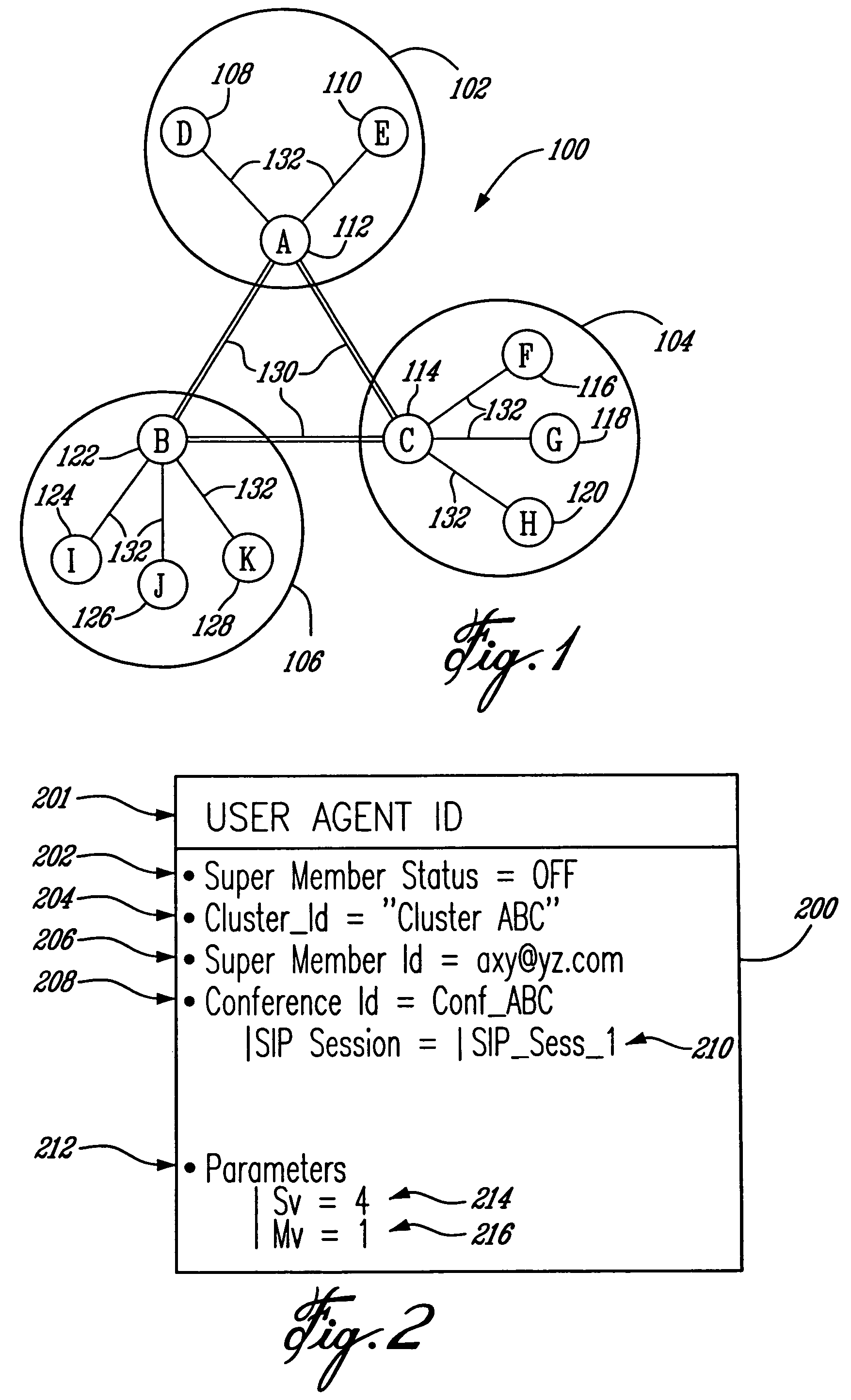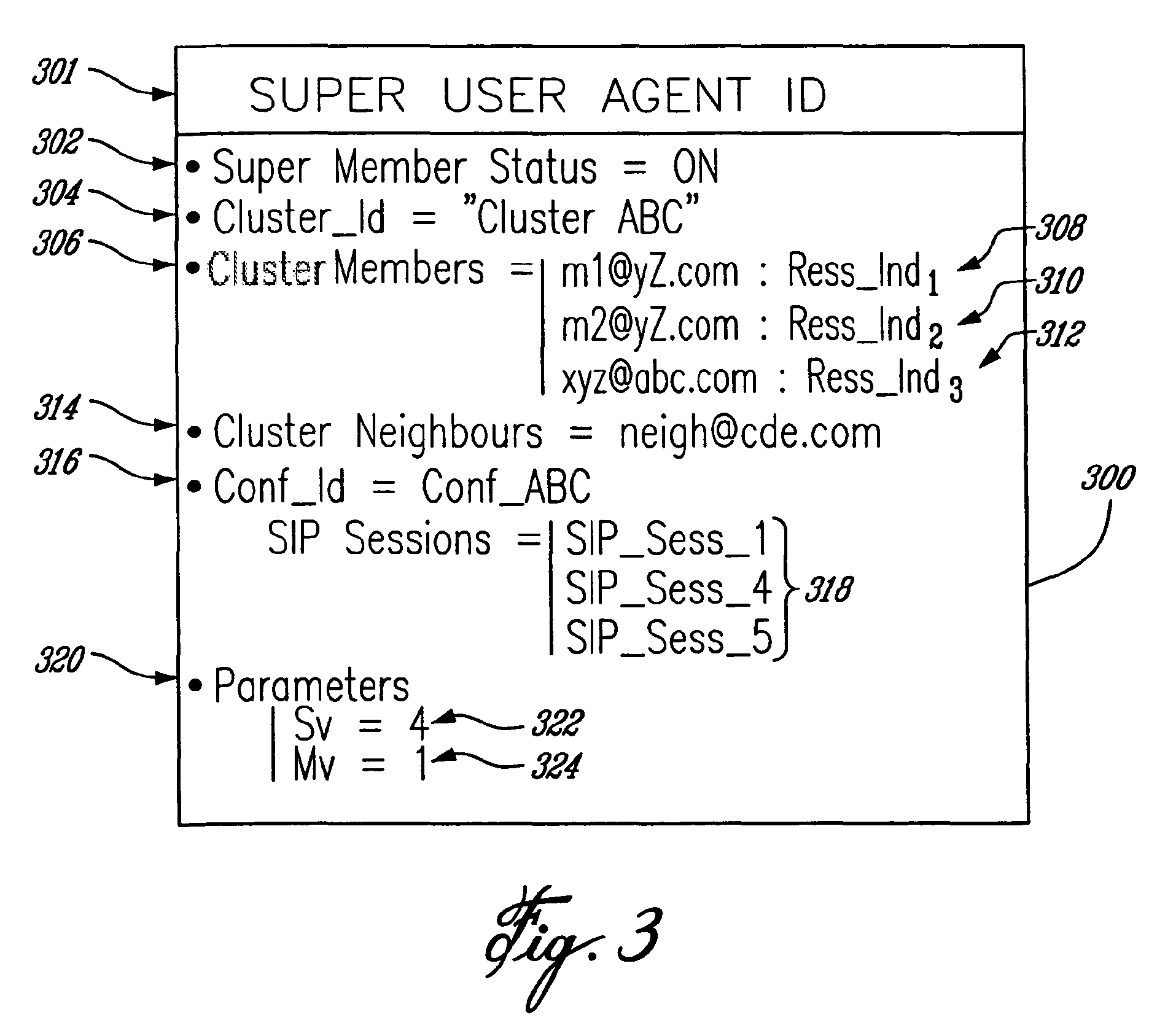Cluster of terminals and ad-hoc network for cluster-based multi-party conferencing
a multi-party conference and terminal technology, applied in the field of ad-hoc network communication methods and systems, can solve the problems of lack of pre-existing and non-transient infrastructure, no or little work on signaling in peer-to-peer ad-hoc networks so far
- Summary
- Abstract
- Description
- Claims
- Application Information
AI Technical Summary
Benefits of technology
Problems solved by technology
Method used
Image
Examples
Embodiment Construction
[0042]The innovative teachings of the present invention will be described with particular reference to various exemplary embodiments. However, it should be understood that this class of embodiments provides only a few examples of the many advantageous uses of the innovative teachings of the invention. In general, statements made in the specification of the present application do not necessarily limit any of the various claimed aspects of the present invention. Moreover, some statements may apply to some inventive features but not to others. In the drawings, like or similar elements are designated with identical reference numerals throughout the several views.
[0043]According to the present invention, there are provided methods, system, and user agents for efficiently establishing ad-hoc networks capable of carrying on multiparty conferences among a plurality of terminals.
[0044]In peer-to-peer ad hoc networks, there should be no centralized signaling entity, since there is no centrali...
PUM
 Login to View More
Login to View More Abstract
Description
Claims
Application Information
 Login to View More
Login to View More - R&D
- Intellectual Property
- Life Sciences
- Materials
- Tech Scout
- Unparalleled Data Quality
- Higher Quality Content
- 60% Fewer Hallucinations
Browse by: Latest US Patents, China's latest patents, Technical Efficacy Thesaurus, Application Domain, Technology Topic, Popular Technical Reports.
© 2025 PatSnap. All rights reserved.Legal|Privacy policy|Modern Slavery Act Transparency Statement|Sitemap|About US| Contact US: help@patsnap.com



